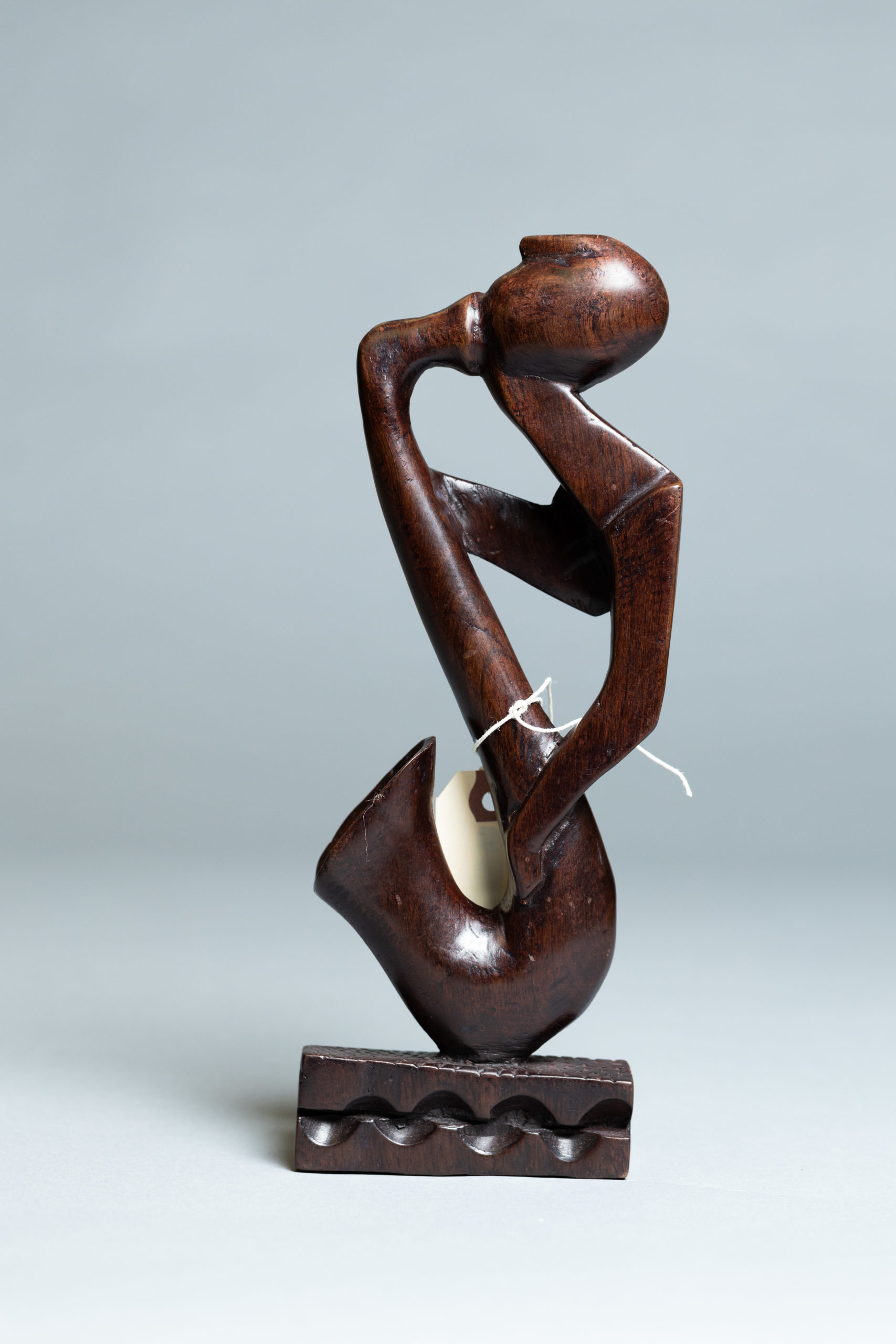
April 26, 2021
By Vivien Makos, Folk Art Collections Specialist at Alapocas Run and Wilmington State Parks
Liv Pancheri, Folk Art Collections Assistant at Alapocas Run and Wilmington State Parks
The Delaware Folk Art Collection was established by the former Folk Art Collection manager, Michael Miller, and its two other founders, Chazz and Susan Salkin in order to show folk art that represented the personal histories and identities of Delawareans. The Blue Ball Barn at Alapocas Run State Park has been home to the Delaware Folk Art Collection for over 10 years.

With a continually growing collection that features a variety of folk art from upwards of fifty artists native to Delaware, it’s no surprise that some pieces have been waiting for their time to shine at the Blue Ball Barn. Now their wait has ended with our two new exhibitions, These Ties that Bind: Community Values in Folk Art and Visions and Vistas: Exhibiting Delaware’s Collective Memory.

Blue Ball Barn staff gathering measurements for the new exhibits
The two new exhibits explore themes close to many Delawareans and will allow travelers to the state to connect with its residents through its folk art. These Ties that Bind: Community Values in Folk Art shows the cultural value and use of folk art within the diverse communities of Delaware. Visions and Vistas: Exhibiting Delaware’s Collective Memory focuses on the importance of Delaware’s beautiful landscapes and most memorable architecture.
However, the exhibits aren’t quite ready to be shown to the public in person. Enjoy a virtual sneak peek at what’s to come in the future for the collection and hopefully our virtual work entices you to visit in person when we open to the public!

Staff member removing signs from the previous exhibit
Artist Highlight from These Ties that Bind: Community Values in Folk Art
Wooden Saxophone Sculpture, Unknown Date, by Unknown Artist.
The unknown artist has carved a delicate abstract portrait of a saxophonist out of wood and finished the work with a deep mahogany varnish. Despite the artist’s anonymity, we can see the care and passion they have for music as a medium. If you examine the work’s delicate craftsmanship closely, it becomes clear that the artist’s intention is to make a visceral connection between the viewer and their own passion for music. Love and care are found throughout the sculpture’s details such as the evenly applied varnish along the wood or the purposefully smoothed out edges of the saxophonist’s body. However, the key detail is the repetitive shapes in the sculpture’s negative space. The empty spaces between the saxophonists’ arms and his instrument are the same triangular shape and evenly reappear throughout the sculpture. This visual repetition imitates the rhythmic beat of a song and displays the artist’s obvious love for the medium for viewers to see and connect with.

Artist Highlight from Visions and Vistas: Exhibiting Delaware’s Collective Memory
Harbor of Refuge, 1997, by Steve Harrington
Artist Steve Harrington depicted the iconic Harbor of Refuge Light located in Lewes, Delaware using colored pencil and water-based paint on paper. The lighthouse has been a part of Delaware’s seascape since 1908, serving as a guide to the area’s passing ships. However, the lighthouse sits in dangerous territory and is constantly under the combined threat of heavy storms and large waves that erode its base. Steve Harrington’s piece depicts the lighthouse in a moment of peace as it faces a rising sun over the sea. A single ship sits to the left of the harbor as it prepares to sail into the calm waters across the horizon. This work commemorates the Lighthouse as a beacon of Delaware, providing a comforting presence to its residents and those that are new to the state’s shores.

Explore the Virtual Exhibits
Presenting Delaware Folk Art Collection exhibits amid the global pandemic demanded the use of innovative technology. The Folk Art Collections team utilized ArtSteps, a web-based platform for the creation of virtual art galleries in life-like 3D spaces, to assist in the installation process and will be used in art education programming.

This digital program translated a to-scale foam core model and the creative visions of the Folk Art Collections Specialist, Vivien Makos, into virtual reality. Its flexibility made it possible to create a replica of the exhibition floor. The finished product was able to include some of the Blue Ball Barn’s charming architectural nuances such as the brick staircase and arch top windows. Throughout the in-person installation process at the Barn, the digital exhibit has been supportive in many ways — including being used as a planning aid, a completed portfolio, and temporary exhibit space for The Young Brandywine Artist Exhibits.
These new exhibits are expected to be available for in-person viewing for late summer, but be sure to follow Alapocas Run State Park on Facebook for updates!
Take a virtual tour of the Folk Art Exhibits


